Selling children’s book rights into new territories, languages, and formats is the business of the Bologna Book Fair in Italy. The 61st year of the fair took place last week and attracted over 1,500 exhibitors and a total of 31,735 professional visitors over the four days. Literary agent Frances Plumpton explains what it’s all about.

Bologna is serious business: there are four huge halls housing exhibitions by publishers from around the world, one including the Rights Centre where literary agents are based.
The fair is also an opportunity for many scouting publishers to see titles they would otherwise be unaware of. It’s always fascinating to walk the halls at the fair gazing at the sheer variety of exhibitors. The bigger publishers—Penguin Random House, MacMillan, Scholastic, Walker Books—have their stands managed by appointment-checking counter staff so there was no chance of browsing the shelves if you weren’t on the list!

Our Publishers Association of New Zealand (PANZ) stand was managed from the outset by member services manager Katherine Shanks, assisted by Juliet Dreaver, a recent Whitireia Publishing graduate. They fielded queries, passed on messages and chatted with interested passers-by. Katherine also produced the accompanying virtual booklist. The eye-catching stand was designed by Martin Bailey and sponsored by Creative New Zealand, with freight partners Book Systems International and Multi Freight Limited.
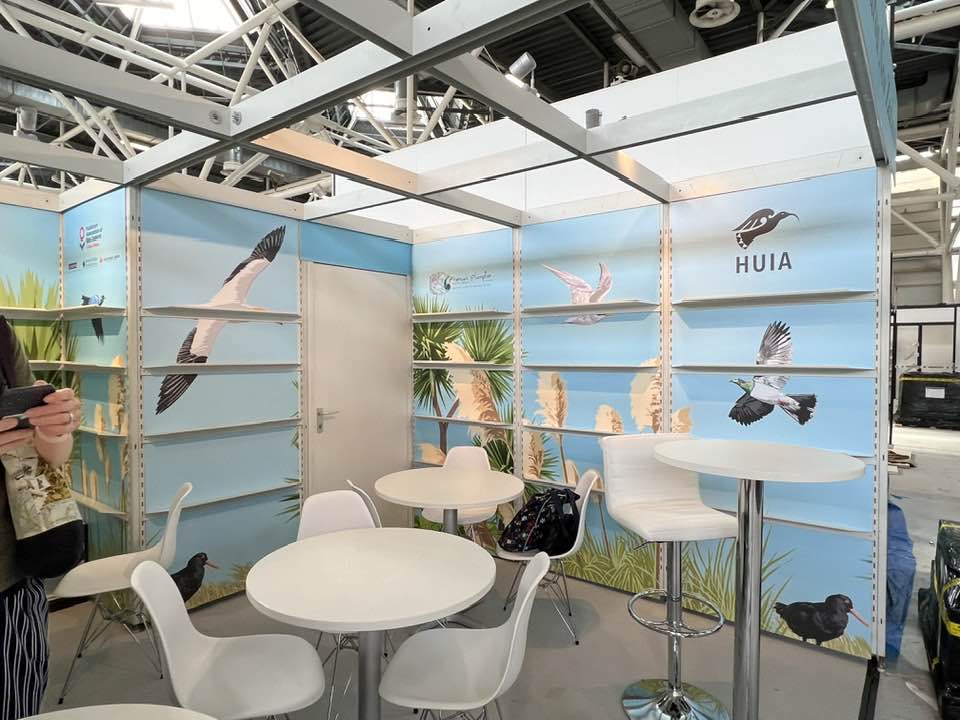
The majority of New Zealand publishers—Scholastic, Hachette, HarperCollins and Penguin—hold on to world rights of the titles they publish, and these are managed by their rights teams based at their publisher stands. I represented a selection of children’s titles from Bateman Books and three picture books from Deborah Hinde’s PictureBook Publishing imprint. I also had a small selection of my client’s recent titles. Queries for me—in addition to my 14 booked booked appointments—came from browsing publishers, which included a South Korean publisher asking for two titles from the Bateman list, one from Brazil requesting a catalogue and one from Spain wanting a middle grade series (contrary to reports that middle grade was a hard sell, it was a frequent request, and I had none at all for young adult recommendations).
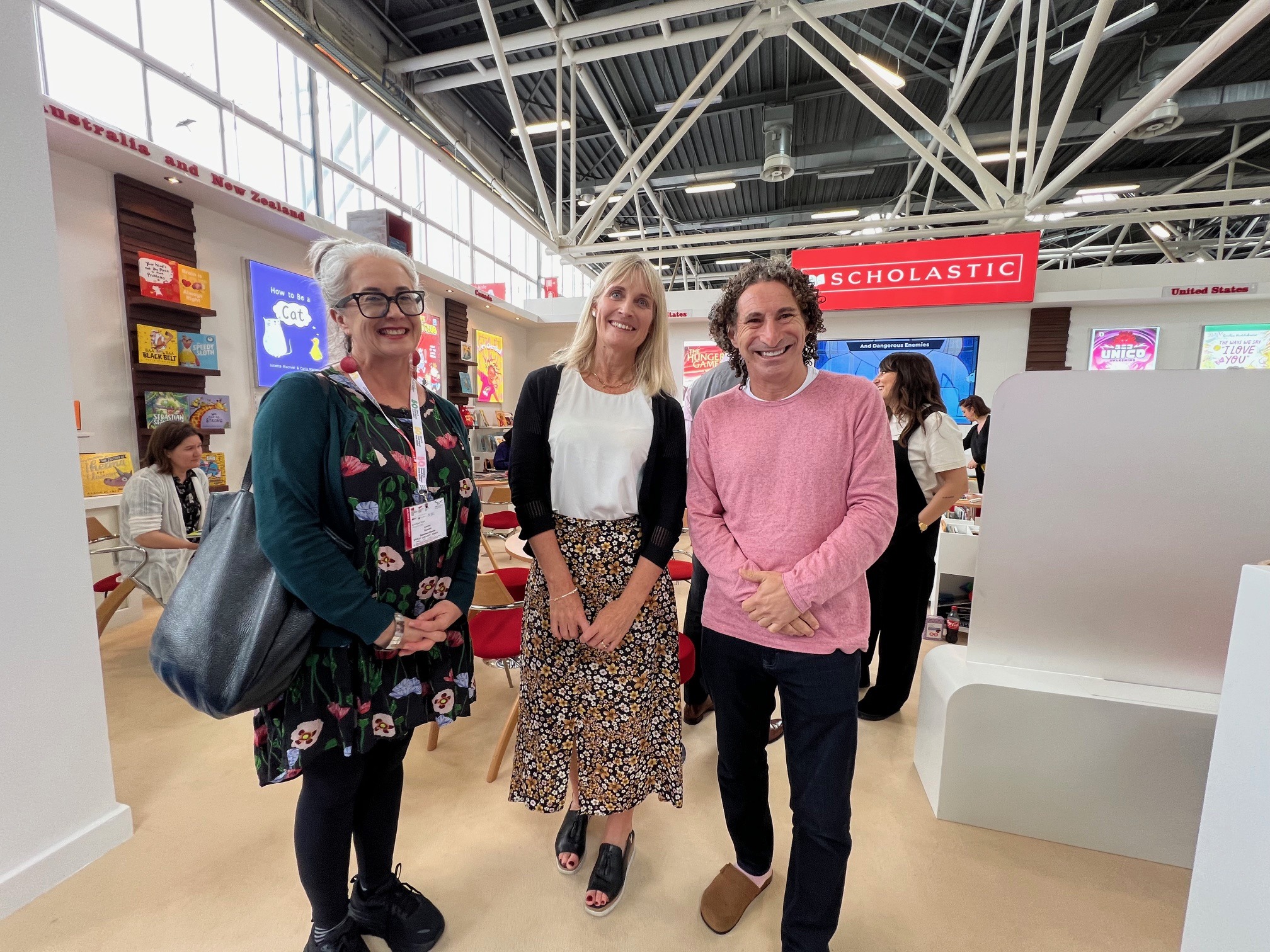
Also on the PANZ stand were Eboni Waitere from Huia Publishers, Peter Dowling from Oratia Publishing, and newcomers Sue Heazlewood and Don Auckram with their Tails of Tangleby Garden titles and accompanying plush toys. Lynette Evans was also present at the fair there representing Scholastic New Zealand on the Scholastic international stand, Louise Russell ran the Bateman Books stand, and Sally Greer from Beatnik Books were participating in the World Lounge as guests of the fair. This is a recent initiative sponsored by the Italian Publishers Association and the Ministry of Foreign Affairs Italy, focusing on adult titles.
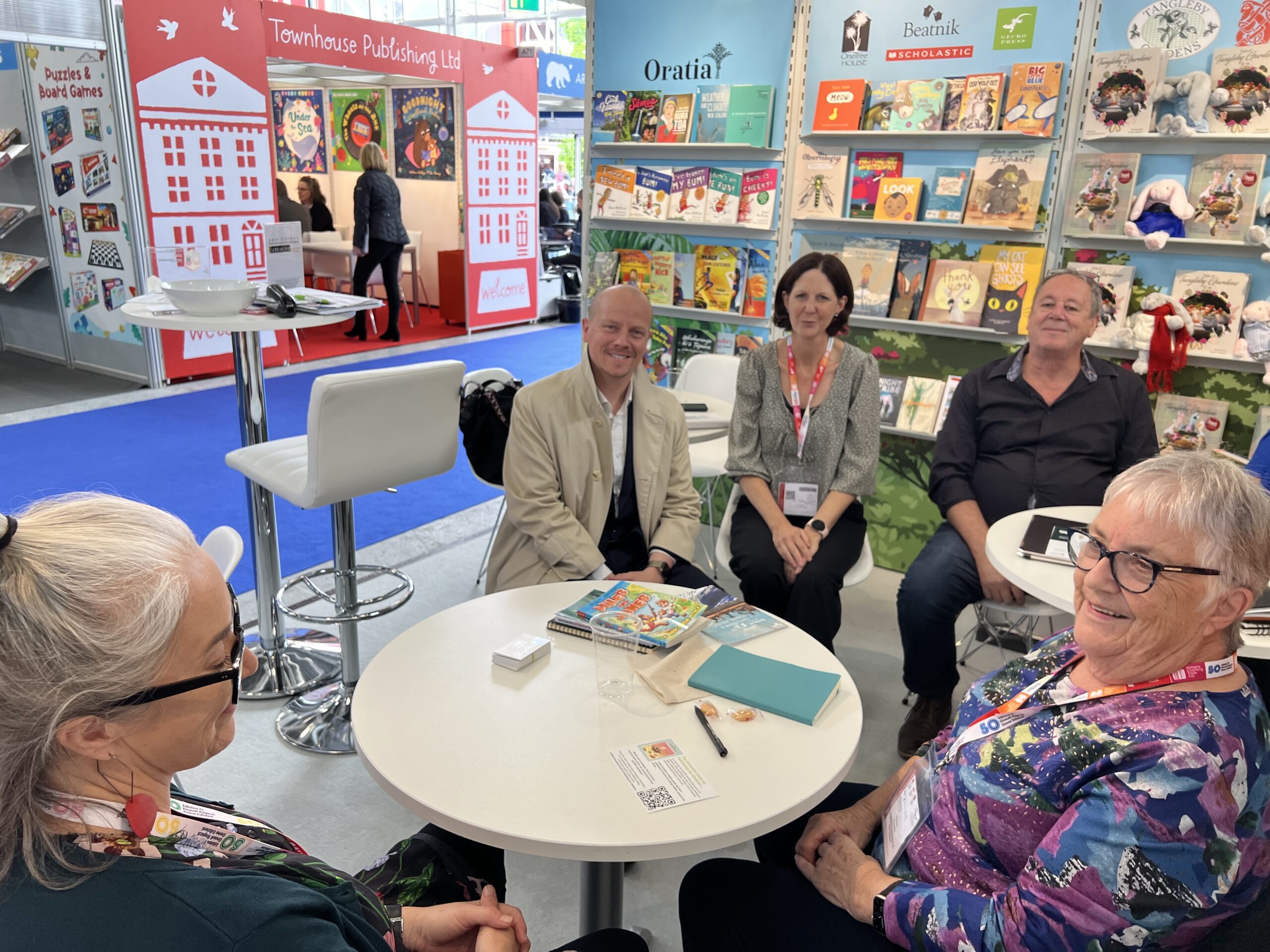
We were thrilled when Huia Publishers won the 2024 Bologna Prize for the Best Children’s Publisher of the Year Oceania, and Eboni also participated in two of the Book Fair event panels: Reading of the Universal Declaration of Human Rights, and Origins: Indigenous Voices in Publishing. Peter, with his extensive influential network, arranged for New Zealand Consul General, Austin Brick—who was very interested in our participation at Bologna—to visit the fair and PANZ stand.
Gavin Bishop’s Atua (Penguin NZ) was on display on the IBBY (International Board on Books for Young People) stand as one of twenty outstanding titles selected by the Hans Christian Andersen Jury as ‘important enough to merit translation everywhere so that children around the world could read them.’
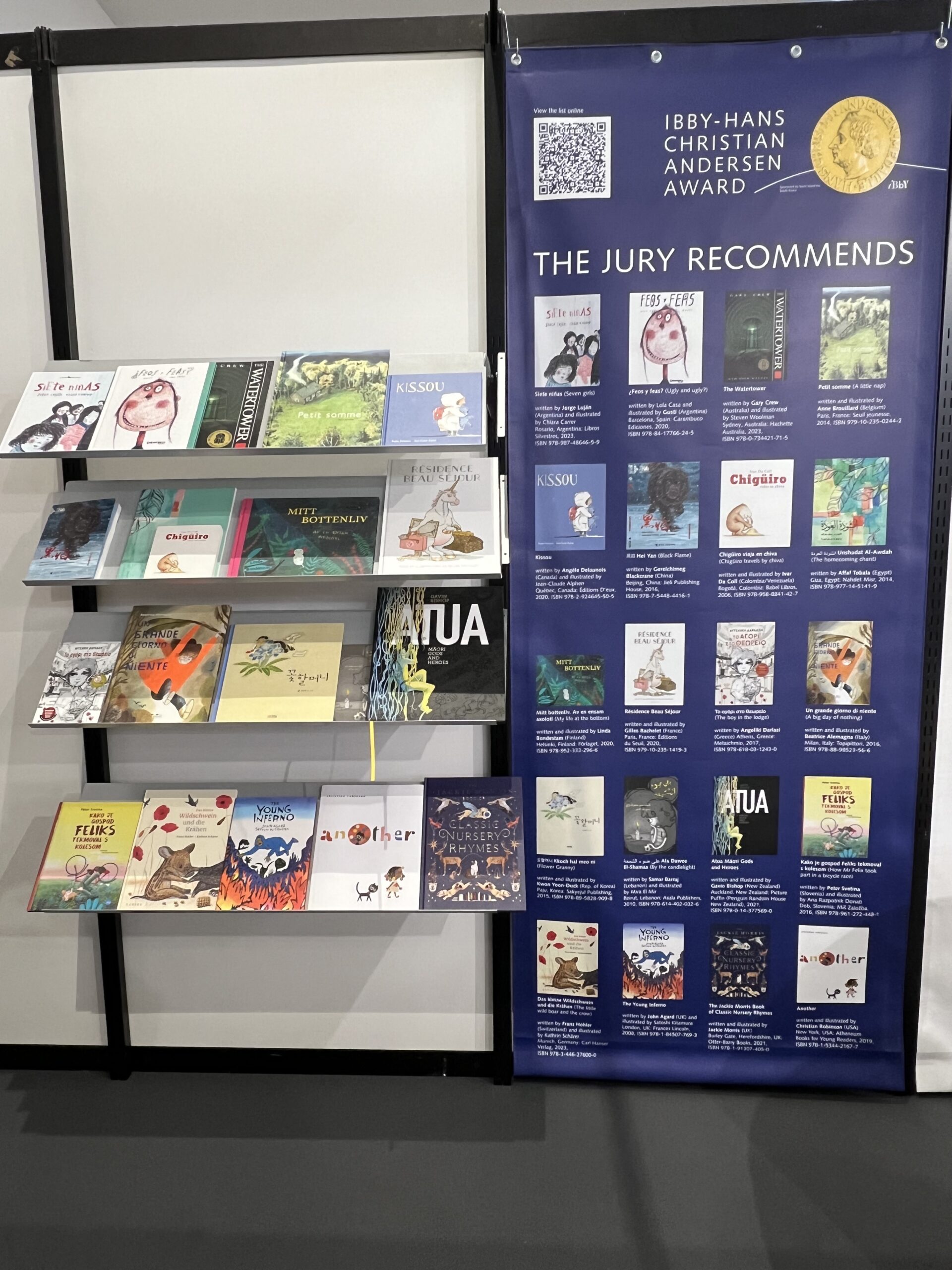
I’ve attended the Bologna Book Fair from 2007 to 2019, and again in 2024, and what I have noticed is that many excellent independent publishers have now been subsumed as imprints within larger publishers—our own Gecko Press is now with Lerner USA, although the New Zealand publishing will be maintained by Rachel Lawson, in New Zealand, as the previous publisher Julia Marshall steps back. Peachtree, Holiday House and Pixel+Ink, are now imprints of Walker Books. I suspect that this will limit the range of manuscripts that these publishers will contract as they consider the overall range of the mothership.
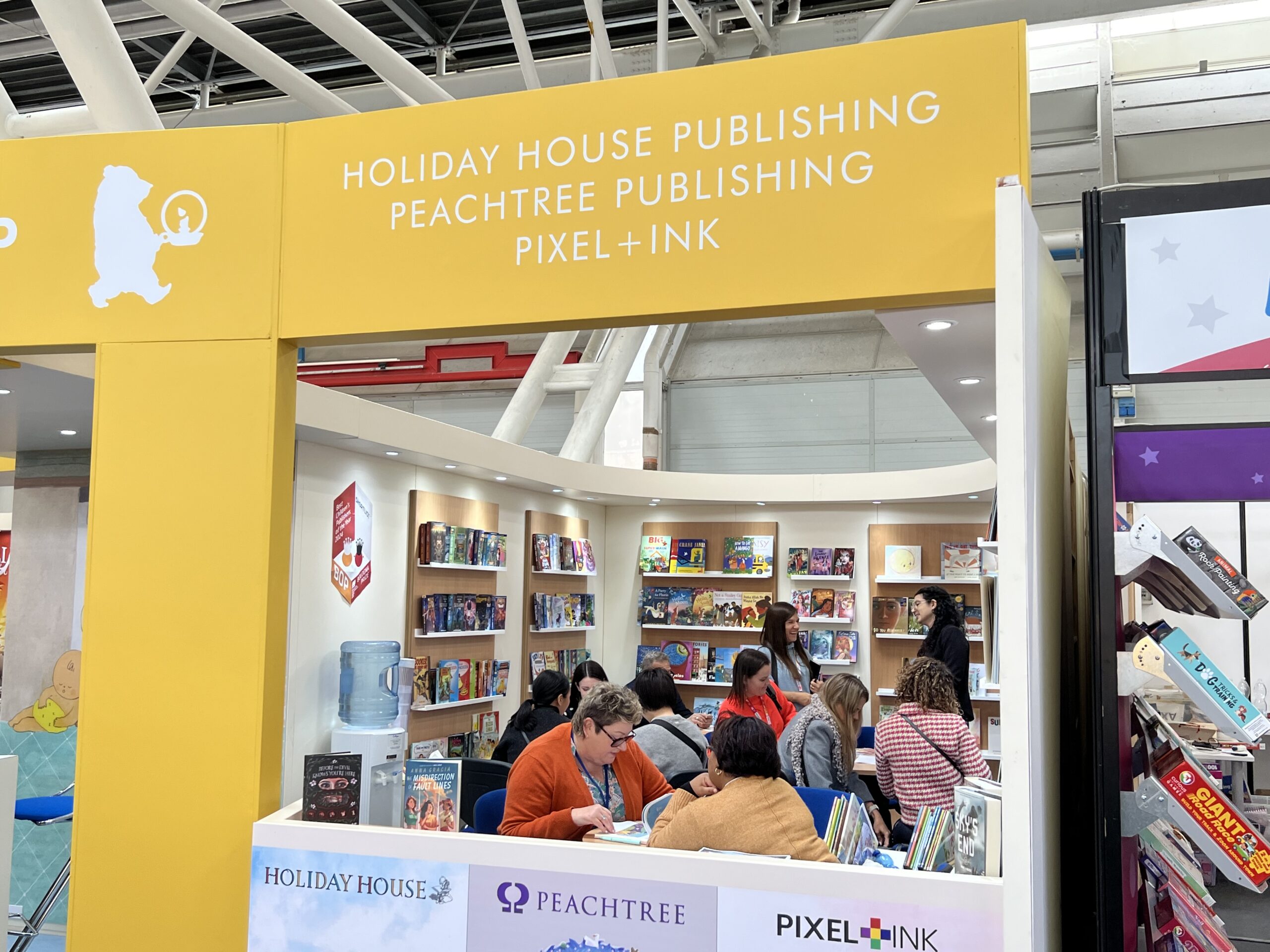
But how does it all work at the fair? Appointments are scheduled every 30 minutes from 9am to 6pm, with some starting even earlier for exhibitors who can access their stands from 8am. Making appointments can be challenging, especially for newcomers, and particularly when these were the first face-to-face meetings in five years for many publishing teams (many did not attend in the last two years, and the fair was cancelled in 2020 and 2021 due to the pandemic). Publishers have contracts with international literary agents, so those are the priority meetings.
There were Chinese printing companies galore, book packagers, and what I call product stands, usually managed by men in suits with little appreciation of children’s literature, merely churning out versions of out of copyright classics—Black Beauty, Little Women, Moby Dick and so on. Sigh!
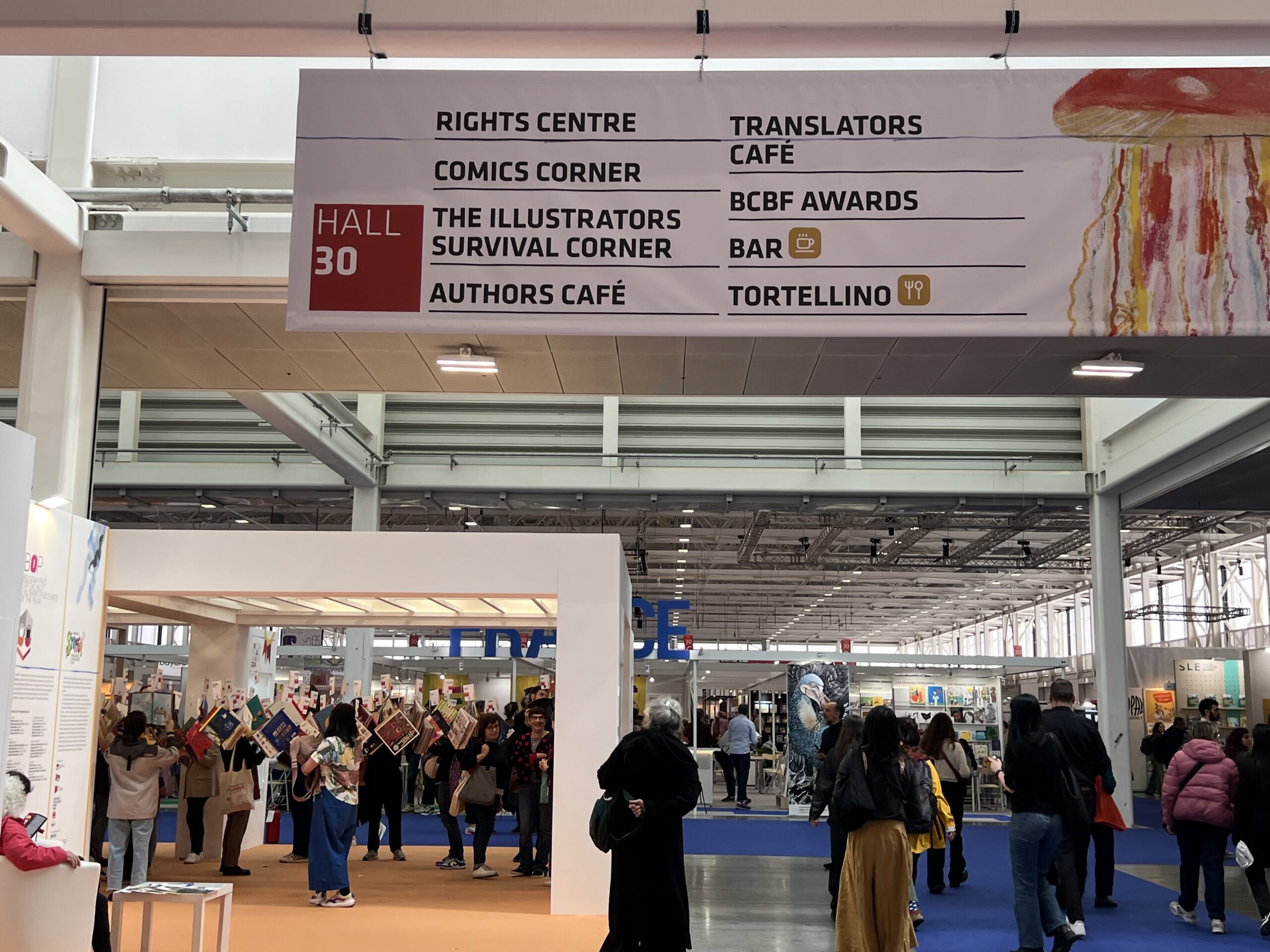
The Rights Centre, with the majority of international literary agents, was hidden behind a row of straggly conifers, and none could pass the attendant counter staff who checked that every appointment was valid. This was a far cry from the days when it was on a mezzanine floor and accessed by escalators, vulnerable to hopeful writers trying to peddle their self-published titles. I used to mutter about floating agents meeting clients there and avoiding the costs the rest of us were paying for a table.
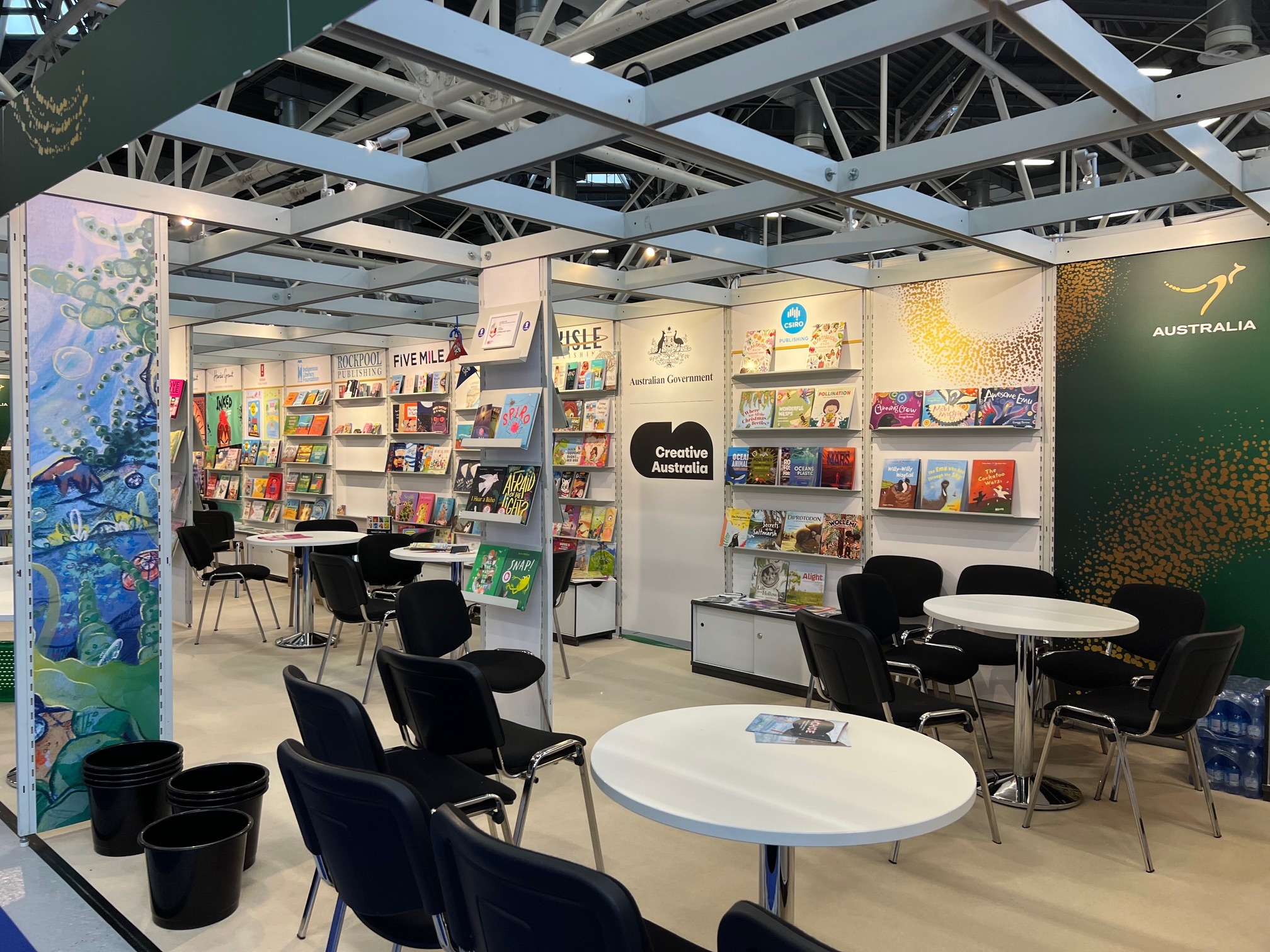
And the requested titles? Low resolution, watermarked PDFs of titles of interest are sent to the acquiring publishers who then consider which titles they would like to publish, and they negotiate contracts with the original publisher. The reality here is that they need to be financially viable to the new publisher and complementary to their lists.

The fair also hosts significant events such as the annual IBBY Press conference outlining their activities of the past year and featuring the highly anticipated Hans Christian Andersen Award winners, and the Astrid Lindgren Memorial Award announcement—this year awarded to Australia’s Indigenous Literacy Foundation. A comprehensive programme of panels and talks on subjects very relevant to the children’s literature and publishing communities took place. Frustratingly, my schedule precluded me from attending most of these.

The illustrator area at the front entrance to the fair always attracts a big buzz. There was the formal illustrator exhibition, and on the first morning, bays of pristine white walls beckoned illustrators to post samples of their work. Within 12 hours there was nary a white space to be seen. This area also housed a display of illustrations from Slovenia, the fair’s 2024 Guest of Honour. Would-be illustrators also have the opportunity to have editors review their portfolios at many of the stands. At our PANZ stand we turned many away, explaining that we generally work with New Zealand creators, consoling them with a silver fern badge that Juliet had supplied. Illustrators could post work online in the virtual illustrator’s gallery and there’s still an invitation to do so until 6 of May. Sadly there are not the same opportunities for writers.
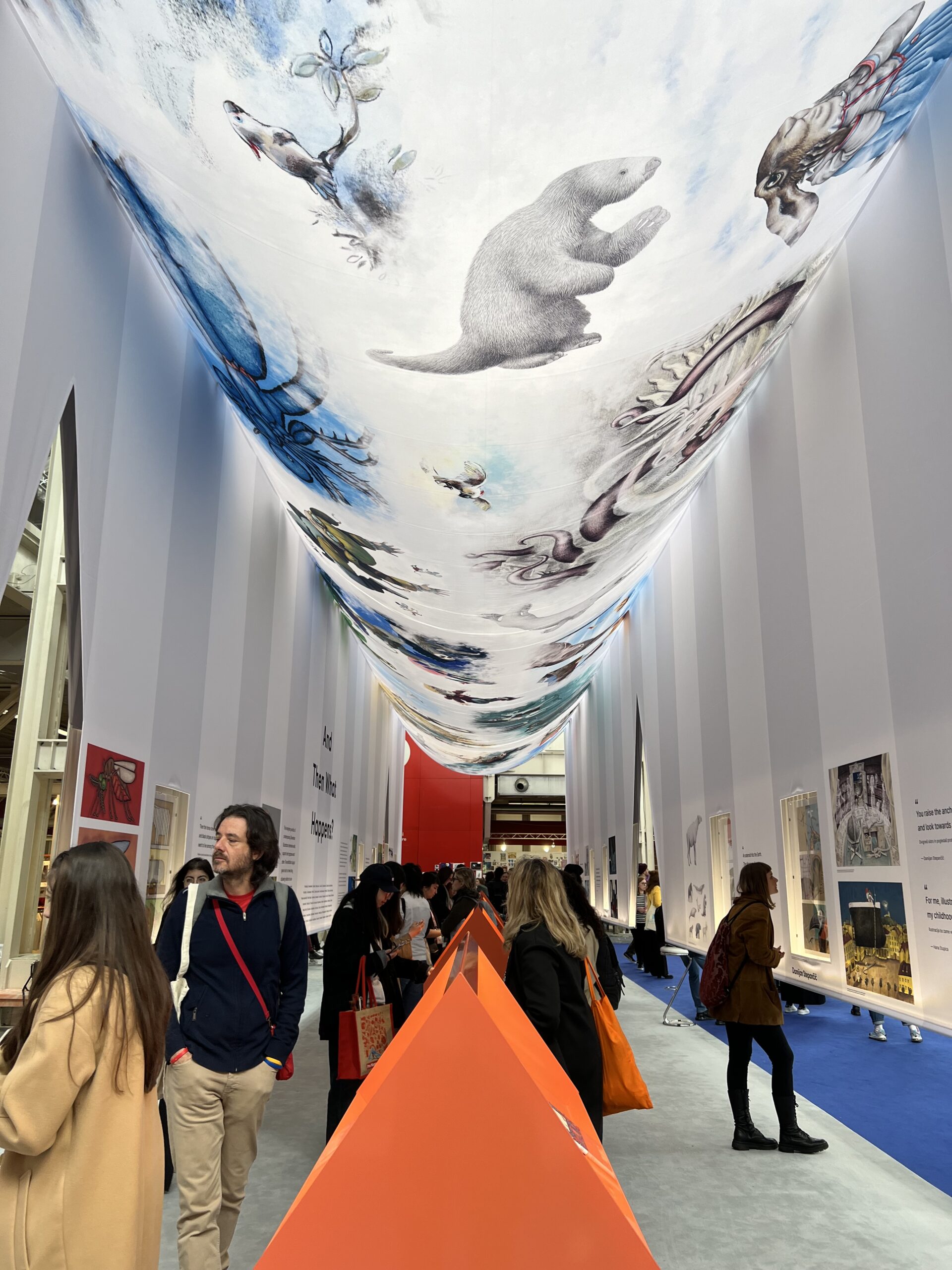
For both visitors and exhibitors there are some never changing challenges—queues! The first to be navigated is entering the fair. Exhibitors can enter from 8am, visitors from 9am, but there is no clear indication of this as you approach the entry doors. And there are the queues at the food outlets and the inevitable queue for the women’s toilets.
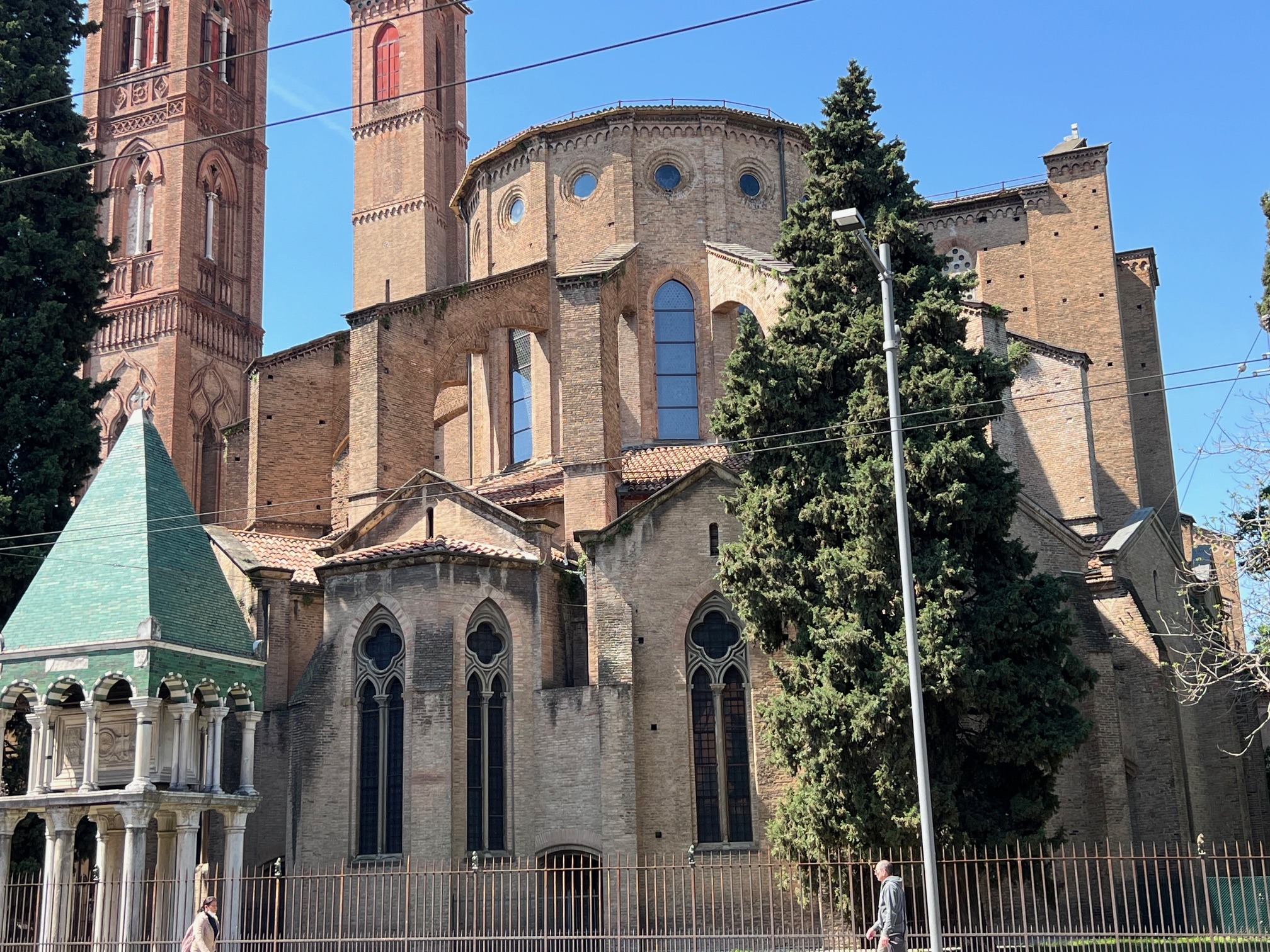
In addition to the fair activities, there are many dinners and celebrations held in Bologna. I was lucky to be invited to the Lerner Books USA celebration of their 65th anniversary and welcome to Gecko Books. I’ll certainly miss Julia Marshall (we’ve shared accommodation in Bologna for at least 10 years) but the imprint will still be based in Wellington in the capable hands of Rachel Lawson. She’ll be carrying on scouting for curiously good books from around the world as well as continuing with a small number of New Zealand titles.
What happens to our books at the end of the fair? Many of them are given to the International Youth Library in Munich to expand the New Zealand collection at this international research library.
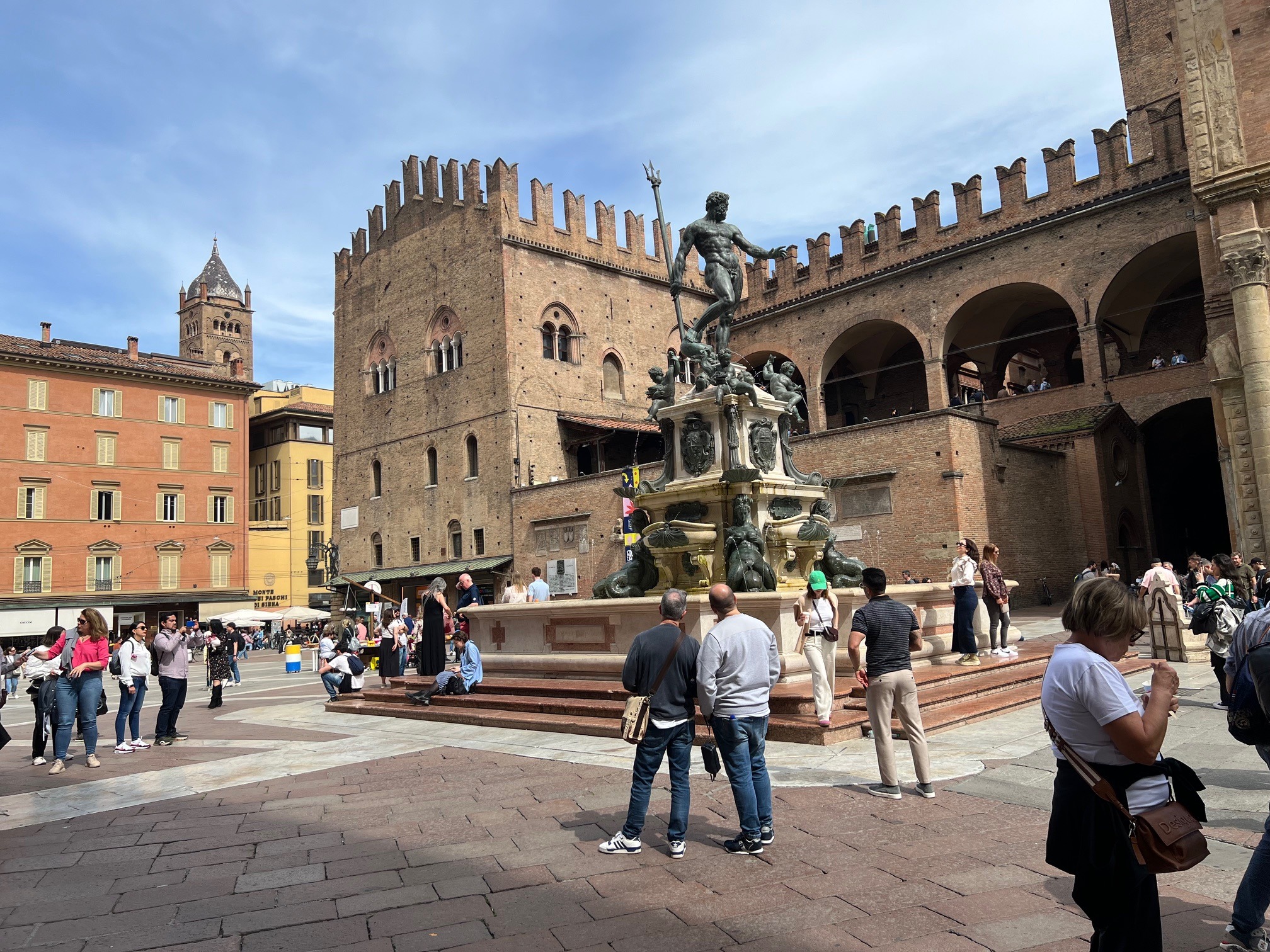
I always feel as if the Bologna Book Fair is good for my soul. It was so uplifting to be back with many dear friends made over the years and the opportunity to explore this stunning medieval town.
And I exceeded 10,000 steps daily.
Photos by Frances Plumpton
Want to know more? Check out the Bologna Book Fair website and their Facebook page.

Frances Plumpton
Frances has loved books and reading since she was a toddler when she always insisted on ‘reading’ the Northland telephone directory in her cot. (Her father was the Postmaster, Okaihau North Auckland). Her first experience of supporting New Zealand books internationally was her involvement selecting books and preparing the catalogues for the Children’s Literature Association of NZ’s exhibitions of New Zealand Books for Children at the International Youth Library in Munich in 1981 and 1985.



